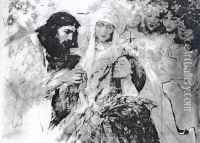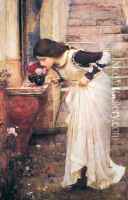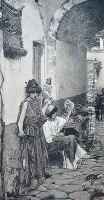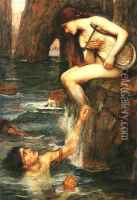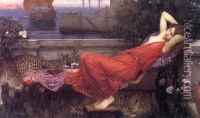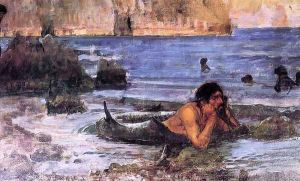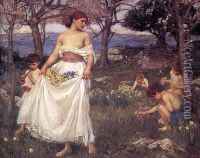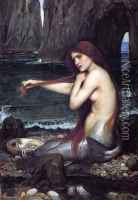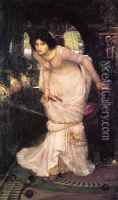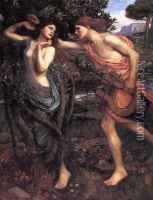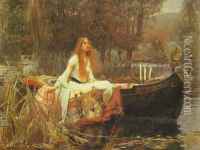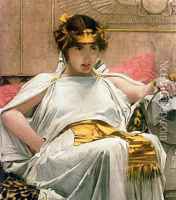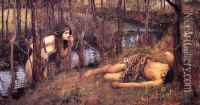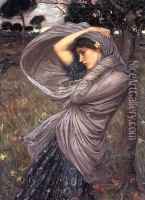John William Waterhouse Paintings
John William Waterhouse was a British painter known for his contributions to the Pre-Raphaelite Brotherhood, a group of English painters, poets, and critics, founded in 1848. Despite being born after the Brotherhood was established, Waterhouse embraced its principles, focusing on subjects inspired by literature, mythology, and romanticism with a particular emphasis on the beauty and complexity of the female form. His work is characterized by its detailed depiction of classical subjects, often imbued with a sense of melancholy and mystique. Waterhouse was born in Rome to English parents who were both painters. This early exposure to the arts played a significant role in shaping his future career. The family returned to England during Waterhouse's early childhood, where he later attended the Royal Academy Schools. There, he developed his distinctive style, combining classical techniques with a Pre-Raphaelite focus on naturalism and detail. Throughout his career, Waterhouse was fascinated by the Arthurian legends, Greek mythology, and other ancient narratives, which served as the primary inspiration for his paintings. Notable works include 'The Lady of Shalott', 'Hylas and the Nymphs', and 'Ophelia', each showcasing his ability to blend realism with a romanticized, dreamy atmosphere. Waterhouse's paintings were celebrated for their vivid portrayal of emotion and beauty, often capturing the tragic fates of his subjects with poignant clarity. Despite his success, Waterhouse remained somewhat reclusive, preferring to focus on his work rather than public life. He was, however, a member of the Royal Academy of Arts and received numerous accolades throughout his career. Waterhouse's legacy is marked by his unique contribution to the Pre-Raphaelite movement, merging classical themes with the detailed observation of nature and human emotion, leaving a lasting impact on the world of art. His work continues to be admired for its beauty, technical skill, and emotional depth, securing his place as one of the late 19th century's most important English painters.

